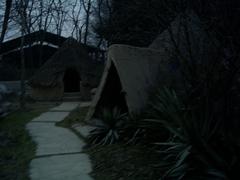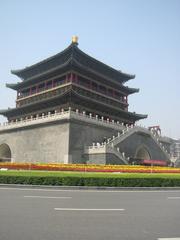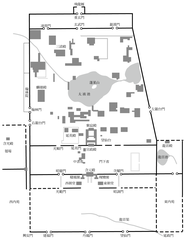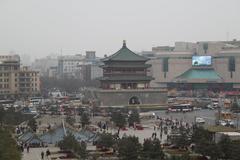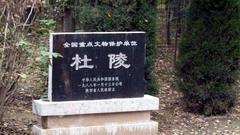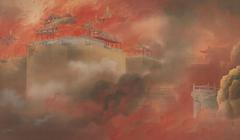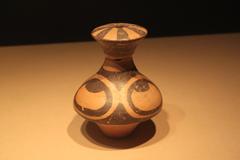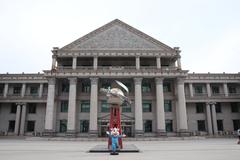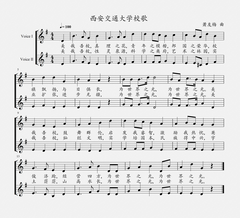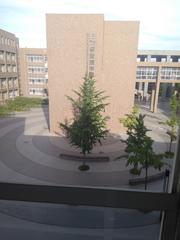Xingjiao Temple Visiting Hours, Tickets, and Historical Sites in Xi’an
Date: 14/06/2025
Introduction
Xingjiao Temple (兴教寺), situated in the tranquil Chang’an District of Xi’an, Shaanxi Province, stands as a profound symbol of China’s Buddhist heritage and Tang Dynasty history. Established in 669 AD to enshrine the remains of the eminent monk Xuanzang—whose legendary 17-year pilgrimage to India and translation of over 600 Buddhist scriptures shaped East Asian Buddhism—the temple offers an immersive journey through centuries of cultural and spiritual legacy. As a UNESCO Silk Roads World Heritage Site, Xingjiao Temple embodies the dynamic exchange between China and India, making it an essential destination for history enthusiasts, spiritual seekers, and cultural travelers alike (Xian Private Tour, Adequate Travel, WindhorseTour).
Contents
- Discover Xingjiao Temple: Why Visit?
- Historical Background
- Foundation and Origins
- Xuanzang’s Life and Legacy
- Architectural and Cultural Significance
- Silk Road Connections
- Visiting Xingjiao Temple: Practical Information
- Visiting Hours
- Tickets and Admission
- Accessibility
- Guided Tours and Visitor Tips
- Dress Code and Etiquette
- Facilities and Amenities
- Best Times to Visit
- Safety and Security
- Nearby Attractions
- Key Highlights and Experiences
- Frequently Asked Questions (FAQ)
- Conclusion and Travel Resources
Discover Xingjiao Temple: Why Visit?
Nestled at the foot of Zhongnan Mountain and bordered by the Fanchuan River, Xingjiao Temple is not only a sacred resting place for Xuanzang but also a vibrant hub of historical and cultural exploration. As the final resting place of a pivotal figure in Buddhist history, the temple invites visitors to experience the enduring legacy of the Silk Road, marvel at ancient architecture, and enjoy tranquil gardens—all within easy reach of downtown Xi’an.
Historical Background
Foundation and Origins
Xingjiao Temple was commissioned in 669 AD, shortly after Xuanzang’s death, by Empress Wu Zetian. It was built on the Shaoling Plain to house his relics and honor his monumental contributions to Buddhism. The temple’s full historical name, “Datang Huguo Xingjiao Si” (Great Tang National Guardian and Flourishing Buddhism Temple), reflects its stature during the Tang era as a center for the flourishing of Buddhism (Xian Private Tour).
Xuanzang’s Life and Legacy
Xuanzang (602–664) is famed for his arduous journey to India, where he studied Buddhist doctrine and brought back invaluable scriptures, relics, and cultural insights. His work, including the “Great Tang Records on the Western Regions,” not only advanced Chinese Buddhism but also inspired the classic novel Journey to the West. The temple preserves his grave tower and the tombs of his principal disciples, Kuiji and Yuance, highlighting his enduring influence (WindhorseTour).
Architectural and Cultural Significance
The temple complex features a five-story pagoda housing Xuanzang’s relics, flanked by the grave towers of his disciples. The Mahavira Hall, bell and drum towers, and a propylaeum exemplify Tang Dynasty architecture, while a Ming Dynasty mural wall offers rare artistic treasures from 1417. The Sutra Hall preserves thousands of Buddhist texts, including palm leaf manuscripts from India, making Xingjiao Temple a vital center for Buddhist scholarship and art (Xian Private Tour).
Silk Road Connections
As a pivotal monument on the ancient Silk Road, Xingjiao Temple symbolizes the intercultural exchange between China and India. Its role as a repository for sacred texts and as a hub for Buddhist learning underscores its historical significance in facilitating the spread of Buddhism across East Asia.
Visiting Xingjiao Temple: Practical Information
Visiting Hours
- Standard Hours: 8:00 AM – 5:00/5:30 PM daily
- Note: Hours may extend during peak seasons or special events; check ahead for festival or maintenance closures.
Tickets and Admission
- Standard Ticket Price: 25–40 RMB per adult (price varies by season and source)
- Discounts: Available for students, seniors, and children with valid ID (Adequate Travel)
- Purchase: On-site or via authorized travel platforms
Accessibility
- Wheelchair Access: Paved paths allow for wheelchair movement across much of the site; some historical structures may have steps or limited access
- Assistance: Visitor help available at main entrance
Guided Tours and Visitor Tips
- Tours: Professional guides (multilingual) and audio guides recommended for deeper historical and cultural understanding
- Photography: Permitted outdoors and in most areas; flash, tripods, and photography of monks or during ceremonies may be restricted
- Crowd Tips: Early morning and weekday visits provide a more tranquil experience
Dress Code and Etiquette
- Dress: Modest clothing covering shoulders and knees is required
- Conduct: Maintain quiet, respectful behavior; incense offerings permitted at designated spots
Facilities and Amenities
- Restrooms: Available near entrance and within temple grounds
- Shops/Souvenirs: Small stalls sell Buddhist artifacts, incense, and local souvenirs
- Refreshments: Limited on-site; local restaurants and teahouses nearby
- Parking: On-site parking for a nominal fee
Best Times to Visit
- Seasons: Spring (March–May) and autumn (September–November) offer mild weather and picturesque gardens
- Festivals: Buddhist events such as Vesak offer unique experiences but may draw larger crowds
Safety and Security
- Security Checks: Bag inspections may occur at the entrance
- Personal Belongings: Keep valuables secure, especially during festivals and crowded events
Nearby Attractions
- Giant Wild Goose Pagoda (Da Ci’en Temple)
- Shaanxi History Museum
- Xi’an Ancient City Wall
- Qinling Mountains for nature trails and scenic views
- Famen Temple—another major Buddhist site in the region
Key Highlights and Experiences
Xuanzang’s Grave Tower
The five-story brick pagoda, standing 21 meters tall, enshrines Xuanzang’s relics and serves as a pilgrimage site. The first floor is open to visitors, where you can pay respects at his statue. Flanking the main tower are the tombs of disciples Kuiji and Yuance (WindhorseTour).
Ming Dynasty Murals
The temple’s wall murals, dating to 1417, depict Buddhist iconography and scenes from Xuanzang’s journey. These rare works provide insight into Ming Dynasty religious art (WindhorseTour).
Monastic Life and Worship
Xingjiao Temple is an active monastery. Visitors can observe monks’ chanting and meditation, and respectfully join incense offerings. Major Buddhist festivals feature public ceremonies and cultural events.
Tranquil Gardens
Ancient cypress and pine trees, traditional gardens, and peaceful courtyards offer a serene environment for contemplation and photography. The gardens are particularly beautiful in spring and autumn.
Sutra Hall
Home to thousands of Buddhist scriptures, including rare palm leaf texts and stone tablets inscribed with the Diamond Sutra, the Sutra Hall is a testament to the temple’s scholarly heritage (Xian Private Tour).
Frequently Asked Questions (FAQ)
Q: What are the opening hours of Xingjiao Temple?
A: 8:00 AM to 5:00/5:30 PM daily; check for variations during festivals.
Q: How much are the tickets?
A: 25–40 RMB per adult; discounts available for students, seniors, and children.
Q: Is the temple wheelchair accessible?
A: Most areas are accessible via paved paths, though some historic buildings have steps.
Q: Are guided tours available?
A: Yes, through local operators or audio guides—recommended for historical context.
Q: Can I participate in worship rituals?
A: Visitors may respectfully join incense offerings and observe ceremonies.
Q: Is photography allowed?
A: Permitted in most areas; restrictions apply inside certain halls and during ceremonies.
Q: How do I get to Xingjiao Temple from Xi’an city center?
A: By taxi (40–50 minutes; approx. 60–80 RMB), metro plus bus, or organized tour groups.
Conclusion and Travel Resources
Xingjiao Temple offers a unique blend of spiritual tranquility, historical depth, and architectural splendor. Its pivotal role in the transmission of Buddhism and its association with the legendary Xuanzang make it an unmissable destination in Xi’an. Whether you seek spiritual reflection, historical insight, or cultural immersion, a visit to Xingjiao Temple promises a rewarding and memorable experience.
Plan your trip today:
- Download the Audiala app for the latest travel updates
- Explore related articles on Xi’an’s top historical sites
- Follow us on social media for exclusive content and event news
For more details on visiting hours, tickets, and transportation, consult these trusted guides:
Sources and Further Reading
- Xingjiao Temple in Xi’an: Visiting Hours, Tickets, and Historical Significance, 2025, Audiala
- Xingjiao Temple Xi’an: Visiting Hours, Tickets, History, and Spiritual Significance, 2025, Xian Private Tour
- Xingjiao Temple Visiting Hours, Tickets & Guide to Xi’an Historical Sites, 2025, Adequate Travel
- Xingjiao Temple Visiting Hours, Tickets & Guide to Xi’an Historical Site, 2025, WindhorseTour
- Xingjiao Temple Visitor Information, 2025, Trip.com
